The resonating sound of the conch shells elevates the synchronized music of the drums and bells, with the chanting steadily rising in tempo and faith; the god is brought out of the temple. Lord Jagannath, the reincarnation of Lord Krishna, resides in the temple town of Puri along the Bay of Bengal in Bhubaneswar, Orissa. According to a popular legend, Lord Jagannath desired to visit his birthplace Mathura once yearly along with his brother Lord Balabhadra and sister Goddess Subhadra to show her Mathura on a chariot.
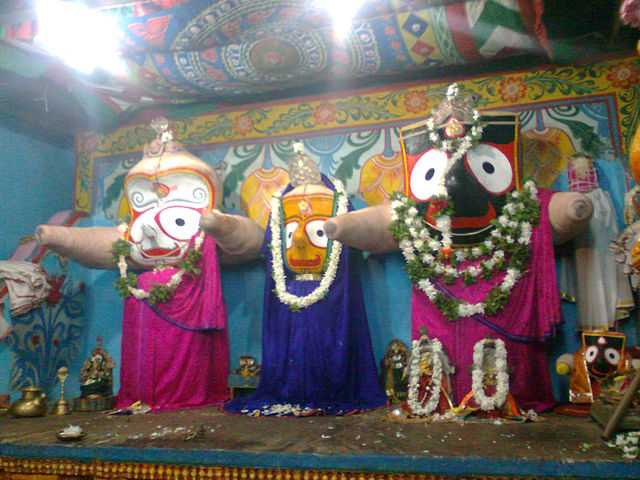
Idols of Lord Jagannath, Goddess Subhadra, and Lord Balabhadra at Puri (Source)
This Journey from the Jagannath Temple in Puri to the Gundichi Devi Temple in Mathura is known as the Jagannath Puri Rath Yatra. Every year, the three deities are carried on chariots few miles away to Gundicha Temple on the second day of the new moon in the month of Ashada (June-July) according to the Hindu calendar. It is probably the only time an idol is taken out of the temple in India. Puri Rath Yatra 2025 will start on the 27th June and celebrated on 5th July. One significance of this Yatra is that people from all religions and faiths can see the deities and participate in the procession, as they are not allowed to enter the temple on other days. For this, the Puri Rath Yatra sees 4-5 lakh pilgrims every year; Indians and foreigners flock in large numbers to get a glimpse of the idols in the chariot. It is believed that those who manage to get a glimpse of the idols will have a prosperous year ahead.
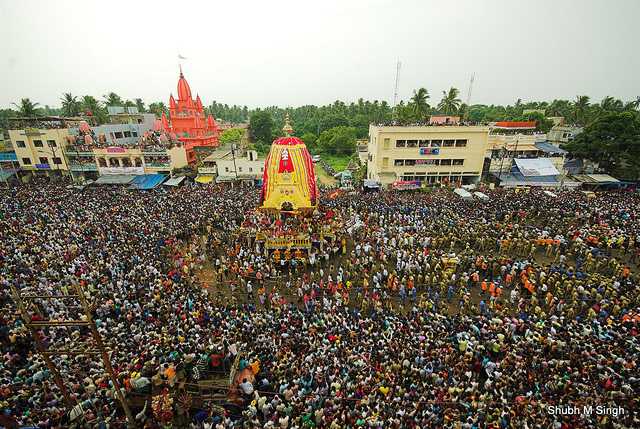
People gathered at Jagannath Temple, Puri for the procession (Source)
Before the Puri Rath Yatra, the three idols are given a ritualistic bath, after which they are kept in isolation until the procession day as they become slightly discolored after the bath and are considered ill for that time. On the day of the Yatra, people gather around the temple chanting and dancing while waiting for the King of Puri, a descendent of the Royal Family of Orissa, to bring the idols out of the temple. He is the only person who has complete authority over the Jagannath Temple. He sweeps the chariot with a gold handle broom and decorates the floor of the chariot with flowers before deeming it fit for the deities. He then sweeps the ground before the chariots and sprinkles sandalwood water around. This is a famous ritual of the Yatra called as the Chhera Pahara. This ritual signifies that everyone is equal in the eyes of the Lord. Placing the idols in the Chariots itself takes a couple of hours, but the enthusiasm of the devotees only rises.
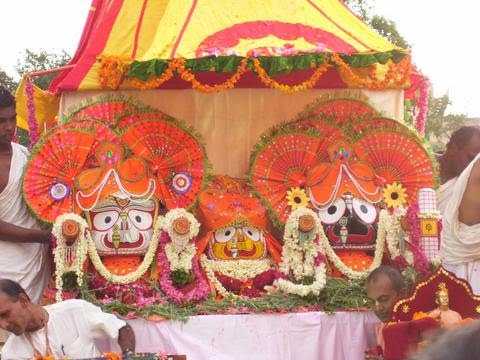
Idols being brought out from the temple (Source)
The chariots of Puri Rath Yatra 2025
All the three chariots are made of wood and decorated by local artists. Lord Jagannath’s chariot is the biggest of the three having 16 massive wheels and a height of 44 feet. While Lord Balabhadra’s chariot has 14 wheels and a height of 43 feet followed by Goddess Subhadra’s chariot having 12 wheels and a height of 42 feet. They are pulled manually by 50-metre long ropes, people rush to help pull the chariots as they believe that pulling the chariot earns them good deeds and penance for their errors. In Puri Rath Yatra, Lord Balaram’s chariot is pulled first then Goddess Subhadra’s followed by Lord Jagannath’s.
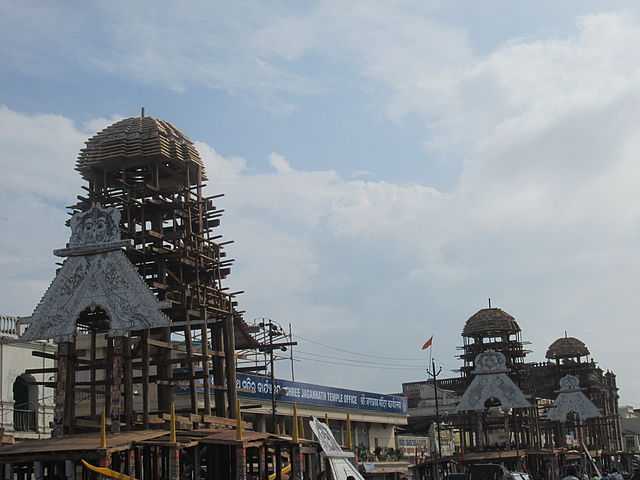
The Chariots were constructed 2 months before the Yatra (Source)
The distance from Puri to Gundicha temple is roughly 3 km however due to the large amount of crowd, Puri Rath Yatra takes a couple hours to reach. Once reached, the deities reside at the temple for a period of nine days, where pilgrims are allowed darshan before taking it back to Puri in the same way. The return journey is called the Bahuda Yatra. On the way back, the procession halts at the Mausi Maa Temple (their aunt’s abode), where the deities are served with Poda Pitha (a sweet pancake). It is a said to be a poor man’s food which was a favourite of Lord Jagannath. The Puri Rath Yatra is the oldest and the grandest festival in India every year. It dates back to the Hindu Puranas, having mentions in the Skanda Puran, Brahma Puran and Padma Puran. Apart from the religious affair, this Puri Rath Yatra greatly signifies the feeling of brotherhood that is present among the people who gather here despite coming from different social structures and parts of the world.
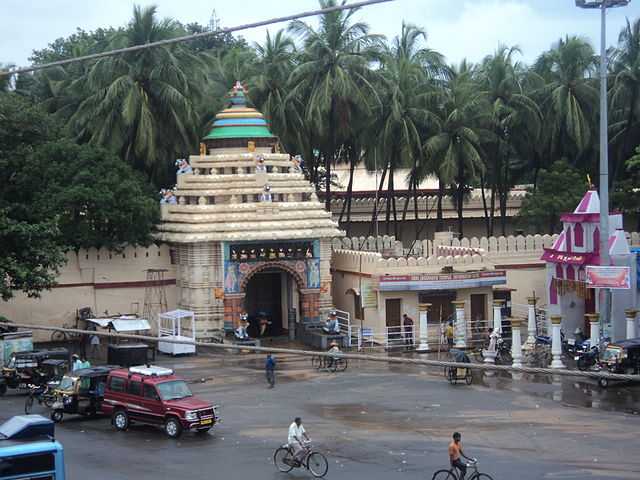
Gundicha Temple (Source )
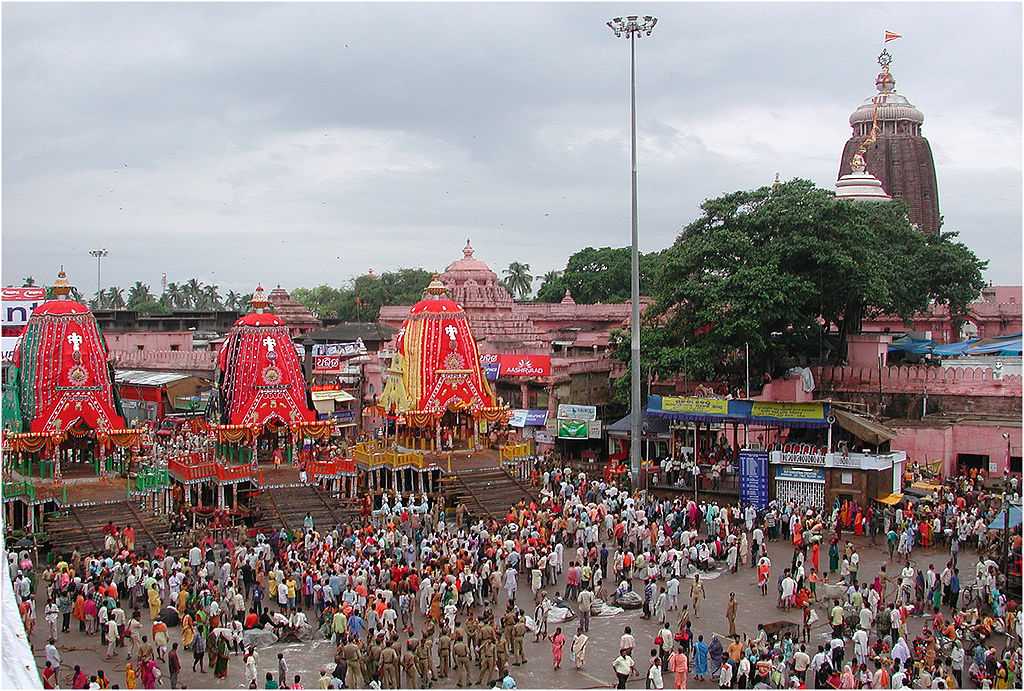
Bahuda Yatra – return journey from Gundicha Temple (Source )
Trivia: History behind the name Juggernaut
When the British ruled India, they were fascinated by the energy and the enthusiasm of the Puri Rath Yatra festival that they referred it as Juggernaut meaning a huge vehicle which would crush anything that comes in its way because many pilgrims believe that dying under the Rath will attain them instant salvation. However, Juggernaut was derived from the word Jagannath which means, ‘The Lord of the World’.
